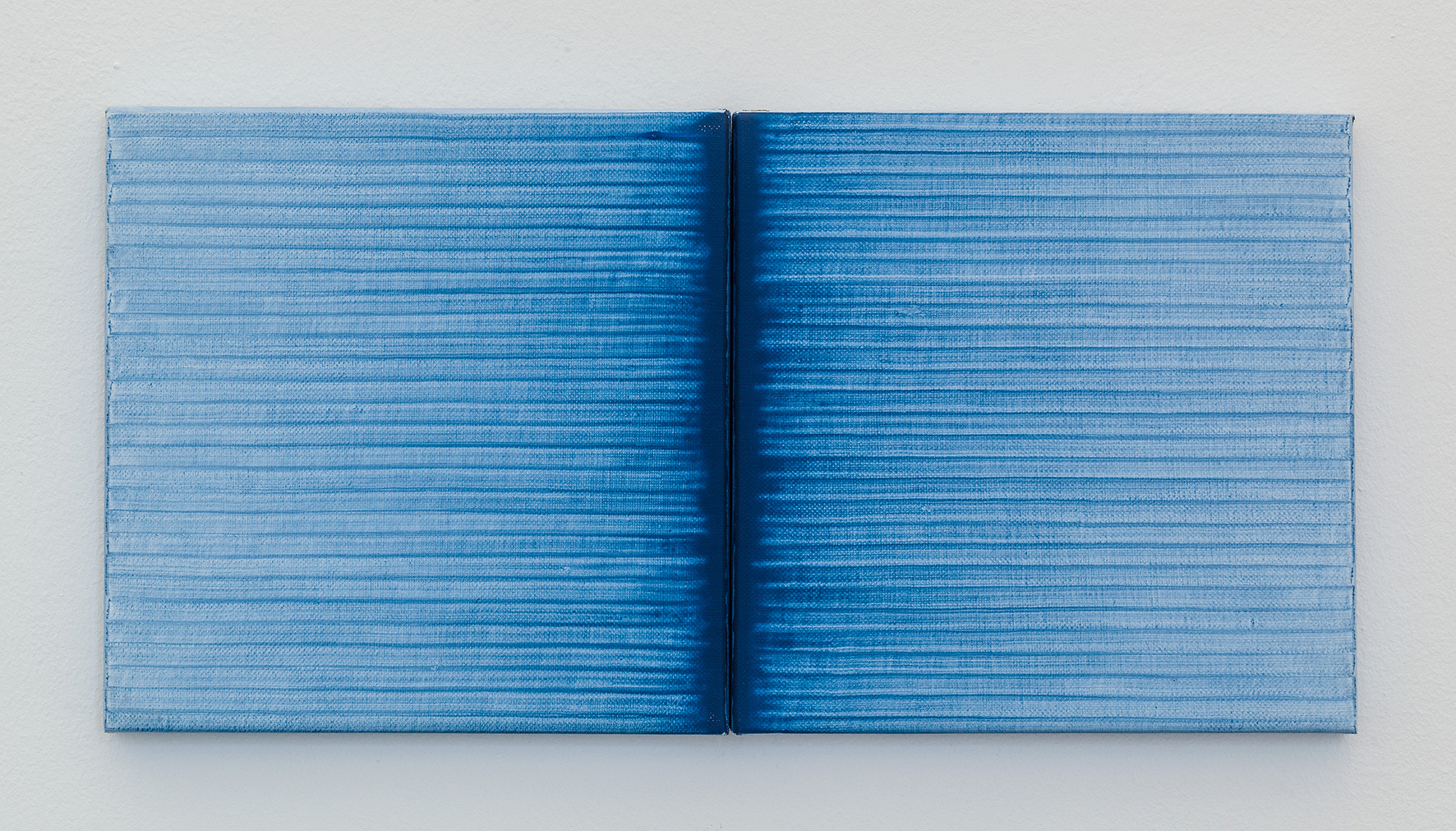TYPE, PLEASE
Irma Blank (*1934)
Melanie Ender (*1984)
Isabella Kohlhuber (*1982)
Doris Piwonka (*1968)
Salome Schmuki (*1979)
Dominik Steiger (1940-2014)
Andrea van der Straeten (*1953)
The title of Type, please (2016) is borrowed from Salome Schmuki: writing down letters, typing, talking. Mistyping, pausing, going back, back to the word stem, starting again, getting closer; then surprisingly: a new word, a new meaning. A known word? A buried, hermetic etymology or a neologism. Plays on words.
Inventing letters and generating words from them. New characters, letters and alphabets form new semantics. Encrypted, encoded, still to be cracked. Wavy lines that look like handwriting but evade any readability. Pronouncing words, phonemes support notations of the visualised text. Following what is said in an adven-turous dramaturgy of letters, movements. Mapping speech acts – the performative interaction of the written, the voice and the body. Drawing lines, loops in space, and forming them sculpturally; or transposing the act of writing into the gesture of drawing and painting. Putting modulations of Sprechgesang (speech song) into the syntax of a pictural form. Speaking voicelessly without hearing, leaving the meaning of characters to signals and gestures . . .
In the presentation of Type, please, these experiments pursue the connection between the prosthetic, perhaps already outdated, nostalgic liaison between the hand and the writing instrument or the keyboard, and the generation of lines, letters and alphabets that abstractly, pictorially and associatively create poetic excess. The exhibition follows the branching turns and paths, the deviations and errors in transmission and translation processes that arise from non- (or not yet) commonplace signs.
Since the 1960s, Irma Blank (* 1934) has been concerned with writing as a process and an activity, freed from the meaning-production of characters by the use of variations of lines and colours. Melanie Ender’s (* 1984) approach to language takes place through the incorporation of sculptural and performative elements. It explores connections between language, text, body and space. Abstract elements of speech acts become concrete in performances and sculptures. Isabella Kohlhuber’s (* 1982) installations, pictures, sculptures and animations are explorations of visual and auditory forms of language and communication. Strange typographies, alphabets and diagrams are eloquent testimony to the materiality and performance of language, its syncretistic multiva-lence in acts of shifting and montage. Doris Piwonka’s (*1968) images which operate exclusively in the medium of painting and push its boundaries, are occasionally based on script and graphic notations that are deliberately eclectically overlayered with other compositional elements and methods. Salome Schmuki (* 1979) investigates the structure and organisation of language, its coding, and the interplay of the perception mechanisms involved in it. She creates typographic designs based on the various different aspects of the reading process. In the early 1970s the poet Dominik Steiger (1940-2014) decided to become a visual artist. In his artistic production, his works remain indebted to the written character and plays on words. In many of her multimedia works Andrea van der Straeten (* 1953) combines her interest in language and literature with technical experiments and a visual vocabulary. In her video installation, among other things she addresses the fact that translation from one language into another is more a process of approximation than of an unambiguous transcription.
Sabine Folie is an art historian, freelance curator and author. From 1998 to 2008 she was Head Curator of the Kunsthalle Wien, from 2008 to 2014 Director of the Generali Foundation, Vienna. Numerous exhibitions, including Marcel Broodthaers: Politque Poetique (2003) and: Un Coup de Dés. Writing Turned Image. An Alphabet of Pensive Language (2008).
The exhibition takes place in the context of curated by_vienna: “image/reads/text. Language in Contemporary Art”. In 2017, 21 Vienna galleries are involved in the project. In cooperation with international curators, the galleries conceptualise exhibitions opening up various perspectives on the topic. curated by_vienna is funded and organised by the Vienna Business Agency with its creative center departure with the objective of emphasising Vienna’s significance as a gallery location.
curatedby.at
